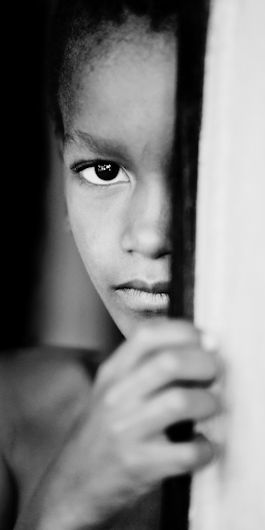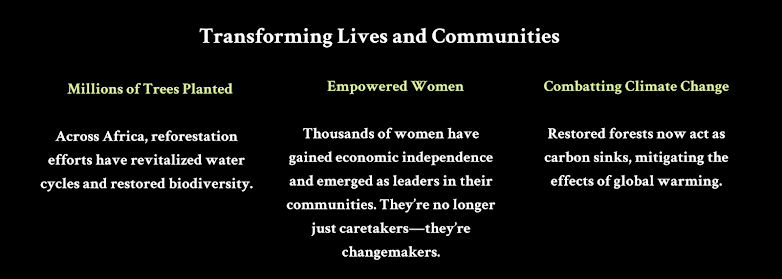This article shares the story of peace and innovation by Wanjira Mathai, the 6th Sunhak Peace Prize laureate.
Imagine this: an endless expanse of dry, cracked earth where green has vanished completely. This isn’t just a visual. It’s the harsh reality of desertification in Africa, where environmental degradation doesn’t stop with the land. Farmers can no longer grow crops, women walk hours just to fetch water, and children suffer without access to clean water, often losing their lives. Remember the Sahel droughts of the 1980s? Millions of lives were lost, leaving entire communities in ruins.
Environmental destruction is never just about nature. It disrupts entire livelihoods, creating food and water shortages, escalating conflicts, and making survival a daily challenge. Most people faced with this level of devastation feel paralyzed. But not Wanjira Mathai. She asked a simple but profound question: “How can we restore forests and improve lives at the same time?” Then she set out to find the answer.
Wanjira Mathai took the baton from her mother, Wangari Maathai, and transformed the Green Belt Movement into a beacon of environmental and social change. Wangari Maathai, a Nobel Peace Prize laureate, launched this movement in the 1970s with the belief that women planting trees could rebuild ecosystems and create social change. At the time, this idea was revolutionary—a bold combination of environmental restoration and community empowerment.
What makes the Green Belt Movement so groundbreaking is its holistic approach. It doesn’t just stop at planting trees; it ties reforestation to economic independence and community solidarity. Its core principles are:
1. Sustainable Tree Planting
By planting native trees suited to local ecosystems, they improve soil fertility and restore biodiversity. This helps farmers increase crop yields and communities secure vital resources like water.
2. Community-Led Solutions
The movement empowers local residents to take charge of reforestation efforts, creating a sense of ownership and responsibility instead of relying on external aid.
3. Women-Centered Education and Support
Women learn to grow and manage tree nurseries, gain economic independence, and develop leadership skills. As a result, they become community leaders who drive change far beyond their households.
Building on her mother’s legacy, Wanjira spearheaded the African Forest Landscape Restoration Initiative (AFR100), an ambitious effort to restore 100 million hectares of degraded land across Africa by 2030. So far, over 30 countries have joined, with more than 30 million hectares already restored.
AFR100 thrives on innovation:
Agroforestry: By integrating trees and crops, farmers improve their harvests, enrich the soil, and gain additional income streams. This isn’t just about planting trees—it’s about creating sustainable livelihoods.
Digital Technology: Real-time monitoring and data analysis optimize restoration efforts, ensuring every step is efficient and impactful.
Green Economy Expansion: By promoting sustainable industries like beekeeping, fruit farming, and timber production, AFR100 generates new economic opportunities. Women are key participants, driving growth within their families and communities.
The Green Belt Movement and AFR100 are far more than environmental programs—they’re blueprints for global peace. Wanjira Mathai has demonstrated that restoring forests is not just about combating deforestation. It’s about fostering women’s empowerment, stabilizing communities, and creating harmony between people and nature. Her leadership has brought together governments, organizations, and individuals to achieve extraordinary results.
What Can We Do?
Wanjira’s story reminds us that small actions lead to big changes. Planting a tree, supporting reforestation projects, or advocating for sustainable policies—these simple steps can collectively transform the world.
Her work proves that restoring forests isn’t just an ecological fix—it’s a pathway to peace and prosperity. The future is in our hands. Together, we can build a sustainable world where people and nature thrive side by side.












